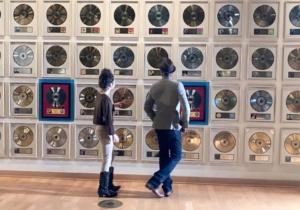
If you have spent a good amount of time – say more than five years – working as a professional, the chances are you will have been caught up in the cycle of promotions and salary increments, and may have lost the drive to pursue interests you always wanted to but never got round to.
So, can you do something about it? The answer, fortunately, is a resounding yes. After four years of working for Procter and Gamble, I felt a need to break out of the routine which had set in and explore my passions in life.
I was enjoying my work and I was constantly challenged every day. Fortunately, the work culture even allowed for a good work-life balance. But something was missing. After a little digging, I found that P&G allowed a sabbatical of three months for employees that had worked there for five years. I approached my manager to find out more.
Meanwhile, I was getting involved with Global Himalayan Expedition (GHE), a social enterprise that was working on bringing energy and education access to remote Himalayan communities. Through this organization, I had been part of a project where we trekked for three days to a remote village and electrified it in just two days. This inspired me to explore this field of rural electrification and combine it with my passion for climbing Himalayas.
So in 2015, I prepared myself for the sabbatical. All it required was for me to show my interest in taking one. After the initial discussion with my very understanding manager – who established how the work would be handled in my absence – I was good to go.
The problem is that most people do not realize that taking a break is an option and most people do not ask for such things since they assume that the company will not support it. Moreover, in our competitive work environment, we fear we would be ‘left behind’ in the invisible race we are all running in the name of ambition.
What we need to understand is that when working in any company, we need to think long-term. A timely sabbatical or a break has the potential to rejuvenate and inspire us. Once back with a clear mind, we can see the path forward and further engage as a more productive resource. Once that thought process is sorted, all it takes is to have a discussion.
So off I went from July 2015 to September 2015 on a life-transforming experience. We at GHE electrified 10 villages during that time and I experienced what true happiness means. How a single light bulb can change the lives of people, how switching on a light bulb can make people dance and laugh and cry with joy. I experienced how communities lived in the harshest conditions but were happy with whatever they had. I saw what living together really means and how everyone in the village was closely tied to each other, something that has been forgotten in our cities. I got to work at the grassroots level with communities and learnt how to react in different situations and how to be patient; for the mountains teach you leadership like no one else can.
When I rejoined P&G, I was energized, equipped with more skills than I had before and I could immediately apply them to my work environment. I was able to break the walls of monotony that had surrounded me and was able to find a new sense of purpose. This was based on the feedback I got from colleagues, my mentors and friends who noticed a very refreshed and new me.
There is an upward trend in employers offering their people more long-term vacations and sabbaticals since it is a win-win situation for all the stakeholders involved. A quarter of Fortune’s 100 Best Companies to Work For offer sabbaticals.
Current trends show that sabbaticals can be extremely marketable for recruiting purposes, since it is a huge incentive for many potential employees and a sign the company is invested in the quality of life and emotions of its employees.
Sabbaticals are not just good for the employee, but also benefit the organizations. By filling in the interim roles with new leaders, the company allows aspiring young employees to showcase their capabilities. This helps to create an agile workforce capable of multitasking, which is required in today’s dynamic world.
Employees who take work sabbaticals report that they return to work feeling more inspired and not just refreshed, but renewed. In fact, many report feeling that they’ve come back to a new job. A study published in the Journal of Applied Psychology found that employees experienced a decline in stress after coming back from a sabbatical.
So, if you are still contemplating on whether you should take that step, don’t think twice. It will be the best decision you ever make. But before you jump into it, be very sure of what you plan to do with that time. Identifying your passion or aim will really make the sabbatical productive and an experience of a lifetime. Whether it is spending time on wildlife safaris, or travelling to Antarctica, taking a cycling trip across the country, volunteering with an organisation to do humanitarian work, or taking up cooking classes, whatever makes you happy.
Remember, life is not a race track filled with other riders jostling for space; it is a lush, green cycling track that belongs to you. You are the sole rider on that beautiful path, there is no one to overtake, and there is no one who will overtake you. Enjoy the ride and do what makes you happy.
Original article on: www.weforum.com

